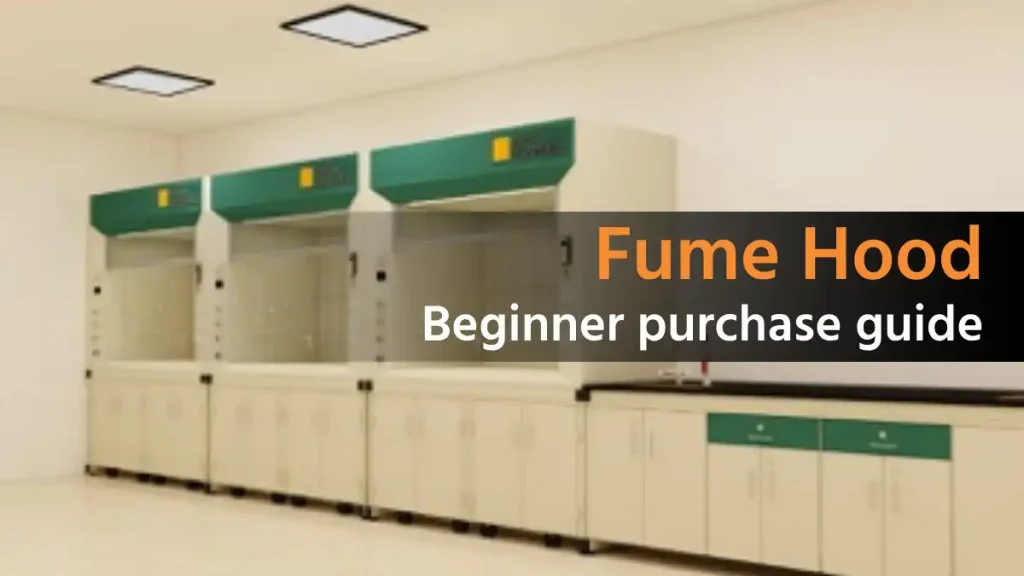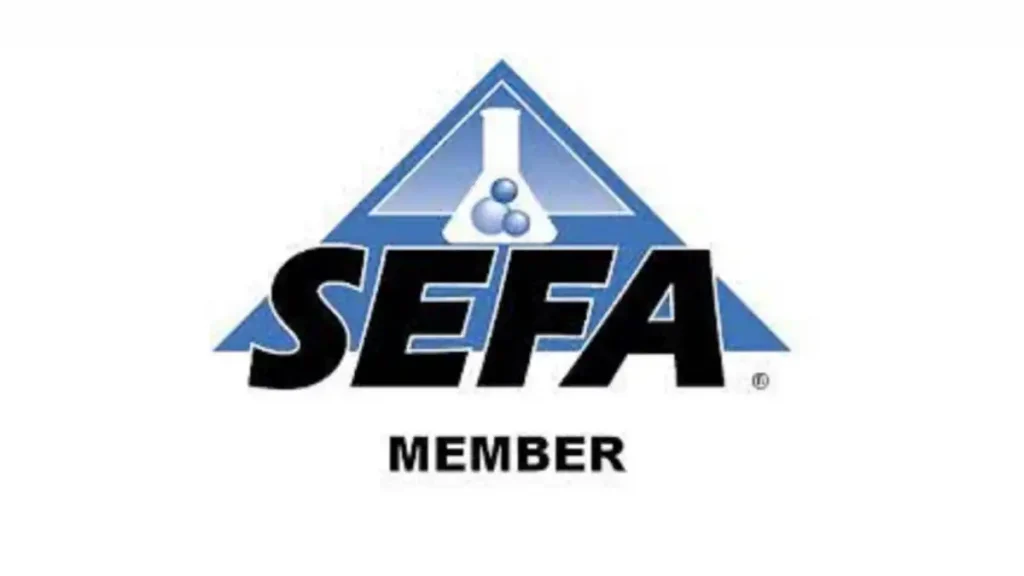Fume hoods are essential pieces of equipment in laboratories, designed to protect users from hazardous fumes, vapours, and dust. They are a critical component in maintaining a safe working environment by containing and exhausting toxic substances. Selecting the right fume hood for your laboratory is a decision that requires careful consideration of various factors to ensure both safety and efficiency.
Ironically, in most of the cases, fume hoods are assumed and chosen as if they were independent devices that work irrespective of any other system. But the truth is, it is only a part of the whole ventilation system, although having an independent exhaust system.
It needs to be ascertained that what are the environments where the fume hood is being installed, and how they are accustomed with fume hood. For example, in an Air-conditioned environment, the make-up air (the replacement of air that is being exhausted by the fume hood), is being supplied by the HVAC system, so, how the ACH (Air Changes per Hour) of the HVAC has been adjusted to make the fume hood perform at safe levels. More simply put, It’s all about Airflow. To maintain equilibrium, the supply air flow must correspond to exhaust.Finding the best suitable location to place the fume hood is also very important in achieving the best performance of the fume hoods. Ideally, it should be placed not near the doors to avoid air turbulences/cross drafts, arising out of foot movement and opening and closing of doors). Also in an optimized situation, HVAC diffusers should not be withing 2M radius of the fume hood, for otherwise it results in more cool air being exhausted from the fume hood.
Table of Contents
Types of Fume Hoods – As per the requirement
Ducted Fume Hoods
Ducted fume hoods are just a part of a building’s mechanical ventilation system and exhaust hazardous fumes outside the building. Key features of ducted fume hoods include:
- High efficiency: Effective at removing a wide range of contaminants.
- Continuous Operation: Can run continuously, providing constant protection.
- Customization Options: Available in various sizes and configurations to fit specific needs.
Ductless Fume Hoods
Ductless fume hoods, also known as recirculating fume hoods, use activated carbon filters, and other filters to clean the air before releasing it back into the laboratory. These are suitable for applications with non-toxic or low-toxicity chemicals.
Key benefits include:
- Portability: Easy to move and install without the need for ductwork.
- Cost-Effective : Lower installation and operating costs compared to ducted hoods, but have higher maintenance.
- Flexibility: Ideal for laboratories with limited space or temporary setups.
Ducted Fume Hoods, also come in variety of types, as per application (chemical contamination) requirement, like
- Walk-In Fume Hoods – Walk-in fume hoods are designed for large-scale experiments and equipment. They provide ample space and are ideal for handling bulky apparatus.
- Distillation Fume Hoods
- Perchloric Acid Hoods
- Radioisotope Fume Hoods
Key Considerations When Purchasing a Fume Hood
Safety and Compliance
When selecting a fume hood, ensuring compliance with safety standards and regulations is paramount. Look for hoods that meet or exceed the following:
- ASHRAE 110: This performance testing standard for laboratory fume hoods ensures effective containment.
- EN 14175 : European Standards for testing standard for laboratory fume hoods ensures effective containment.
- SEFA 1: Scientific Equipment and Furniture Association standards for construction and performance.
Airflow and Ventilation
Proper airflow and ventilation are crucial for the effective operation of a fume hood. Consider the following factors:
- Face Velocity: The speed at which air is drawn through the face of the hood, typically measured in feet per minute (fpm). A face velocity of 80-100 fpm is standard for most laboratory applications.
- Optimized Exhaust System : The user or buyer should discuss the exhaust system configuration details with the manufacturer. This component is crucial for proper operation but often overlooked. Ensuring the exhaust system is correctly configured is essential for the proper functioning of the fume hood. After ascertaining the Duct Route that has minimum number of bends and least distance to travel, overall inter-related calculations of Duct Size, Number of Bends/’Y”/”T”, Static Pressure, CFM requirements, need to done and understood carefully before finalizing the exhaust configuration. The Exhaust Blower Motor selection has to be optimal. Whereas an underpowered Motor will result in system not containing and exhausting properly the fumes, at the same time an over-powerful system will result in much higher energy consumptions and at the same time producing air turbulences within the fume hoods. So, an Optimum size blower has to be matched to the entire system. Also the plume discharge should be high enough to ensure that it is not drawn back into the building.
- Exhaust System Compatibility: Ensure the fume hood is compatible with your building’s exhaust system to prevent backflow and ensure efficient operation.
Material Construction
The materials used in the construction of the fume hood can impact its durability and resistance to chemicals. Common materials include:
- Epoxy-Coated Steel: Provides good resistance to mild chemicals and is cost-effective.
- Stainless Steel: Resistant to corrosion and ideal for environments with strong acids and bases.
- Polypropylene: Excellent chemical resistance and ideal for corrosive environments.
Filter Options for Ductless Hoods
For ductless fume hoods, the type and quality of filters are critical for ensuring proper air purification. Common filter types include:
- Activated Carbon Filters: Effective for organic vapors and gases.
- HEPA Filters: High-efficiency particulate air filters for capturing particulate matter.
Combination Filters: Integrated filters that provide multiple layers of protection for diverse applications.
Installation and Maintenance
Proper Installation
A proper installation ensures the fume hood operates efficiently and safely. Key steps include:
- Site Assessment: Evaluate the laboratory space to ensure adequate room for installation and proper ventilation.
- Professional Installation: Engage qualified technicians to install the fume hood and connect it to the exhaust system.
- Initial Testing: Conduct airflow and containment tests to confirm the hood operates as expected.
Regular Maintenance
Routine maintenance is essential to keep your fume hood in optimal condition. Important maintenance tasks include:
- Filter Replacement: Regularly replace filters in ductless hoods to maintain effective air purification.
- Airflow Testing: Periodically test airflow to ensure the fume hood meets performance standards.
- Sash and Glass Cleaning: Keep the sash and glass clean to ensure clear visibility and smooth operation.
- Mechanical Inspections: Check the mechanical components for wear and tear and replace parts as needed.
Safety Measures
- Keep your fume hood clean and tidy.
- Remember, fume hoods aren’t for handling dangerous germs. Use a special cabinet for that kind of work.
- Don’t leave loose papers or tissues in the hood. They can get sucked into the fan and cause problems.
- Keep the front edge of the hood clear. Don’t put anything there that might stop the shield from closing quickly in an emergency.
- Make sure nothing’s blocking the air flow inside the hood.
- Never stick your head inside the hood. Keep the shield between you and your work.
- Always wear safety glasses or goggles.
- Keep your work at least six inches away from the front of the hood.
- Close the shield when you’re not using the hood.
- If you’re working with really dangerous chemicals, know what to do if there’s an emergency, like a power cut.
- Don’t use the hood for storage. It’s for working, not keeping stuff.
- Keep the shield as low as you can while working. Use it to protect yourself.
- Don’t put electrical stuff inside the hood if you’re working with things that could catch fire easily.
- Clean up any chemical leftovers after you’re done working.
- Don’t use the hood to get rid of waste. It’s against the rules and bad for the environment.
- Remember, the hood is there to keep you safe while you work, not to clean the air.
Cost Considerations
Initial Purchase Price
The initial cost of a fume hood can vary significantly based on type, size, and features. Ducted hoods generally have higher upfront costs due to the need for ductwork and installation.
Operational Costs
Operational costs include energy consumption, filter replacements (for ductless hoods), and regular maintenance. Ducted hoods may have higher energy costs due to continuous operation, while ductless hoods have ongoing filter replacement expenses.
Long-Term Value Investing in a high-quality fume hood can provide long-term value through enhanced safety, reduced maintenance needs, and compliance with safety standards. Consider the total cost of ownership over the lifespan of the equipment.
Conclusion
Selecting the right fume hood is a critical decision that impacts the safety and efficiency of your laboratory. By considering the type of fume hood, safety standards, airflow and ventilation, material construction, filter options, installation and maintenance, and cost considerations, you can make an informed choice that meets your laboratory’s needs.
FAQ’s
What is the average lifespan of a fume hood?
The average lifespan of a fume hood is typically 15 to 20 years, depending on usage and maintenance.
How often should a fume hood be inspected?
Fume hoods should be inspected at least annually, but more frequent inspections may be needed based on usage.
Are there portable fume hood options?
Yes, ductless fume hoods are often portable and can be moved as needed, offering flexibility in the lab.

I’m Arun Kumar Pathak, a professional with 18 years of experience in Quality and Operations management. I hold M.Com, M.A., and PGDIBO degrees. After working with companies like Reliance, GATI, and Vectus, I transitioned to the laboratory field 4 years ago. Currently, I’m the Operations Manager at Space Plus Design Labs Pvt. Ltd., where I collaborate with design and manufacturing teams to manage the production of laboratory furniture, Fume Hoods, and scientific equipment. Also I love to share my experience to create content, that’s way here sharing blog articles.



